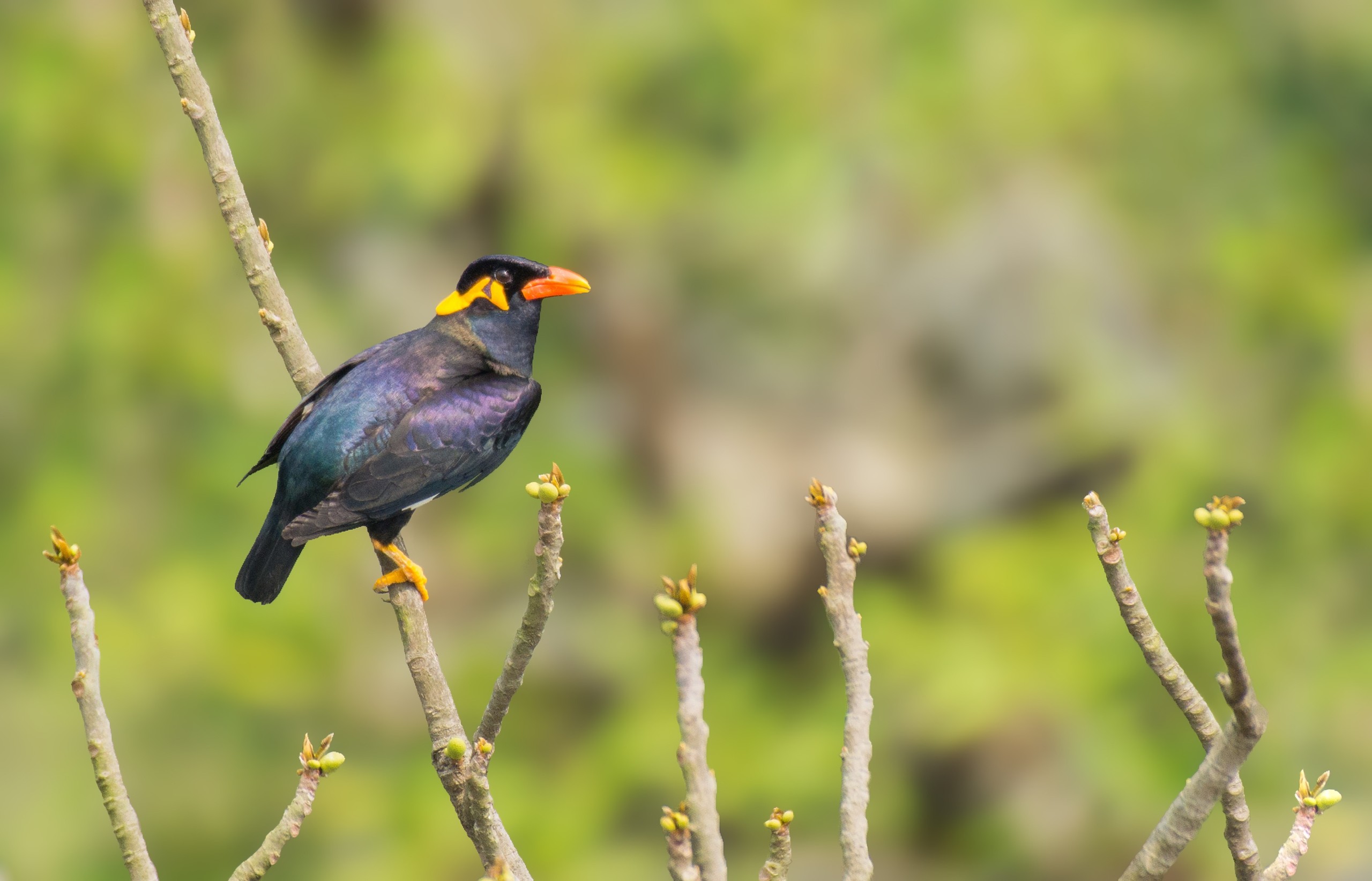 LINKED PAPER
LINKED PAPER
Genomic and morphological data help uncover extinction‐in‐progress of an unsustainably traded hill myna radiation. Ng, D. Y., Švejcarová, T., Sadanandan, K. R., Ferasyi, T. R., Lee, J. G., Prawiradilaga, D. M., Ouhel, T., Ng, E. Y. X. & Rheindt, F. E. 2021. IBIS. DOI: 10.1111/ibi.12839 VIEW
Voted the Best ECR Paper published in IBIS in 2020
The Common Hill Myna (Gracula religiosa) is one of the most traded birds from Southeast Asia. Although this species occupies a wide range, several local populations have gone extinct or have drastically declined due to illegal poaching and excessive trapping (Shepherd et al. 2004). Hence, the Asian Songbird Trade Specialist Group assigned high conservation priority to this glossy black passerine with its characteristic yellow wattles (Lee et al. 2016). The complex conservation situation is rendered even more challenging due to the taxonomic uncertainty of the various island populations in Indonesia (to avoid even more taxonomic confusion, I will use the neutral term ‘taxon’ to describe the different populations from here on). To unravel this taxonomic knot, Dominic Ng and his colleagues performed in-depth analyses of several Common Hill Myna populations using genomic and morphological tools.
Island chain
The researchers focused on the West Sumatran and Barusan Islands, a chain of small islands that experienced a complex geological interplay with the large Indonesian island of Sumatra. Some of these small islands were linked to Sumatra by land bridges during periods of low sea levels, while other islands were never connected to Sumatra. This geological history has shaped the present-day distribution of many bird species, including the Common Hill Myna. On the southern islands of the chain, we can find the taxon batuensis which appears to be a mixture of two other populations: religiosa from Sumatra and robusta from two neighboring islands (Nias and Simuk). The admixed nature of this taxon can be explained by past connections between these islands and Sumatra. The middle of the island chain is occupied by the taxon robusta, which probably spread from the large island Nias to smaller islands, such as Simuk and Bangkura.

Figure 1. The genomic (figures a and d) and morphological (figure b) analyses uncovered three distinct taxa in the Common Hill Myna on the West Sumatran and Barusan Islands (figure e). The colors correspond to the taxa miotera (green), robusta (red) and batuensis (orange).
Unique taxon
Simeulue, the northernmost large island within the island chain, was never connected to Sumatra. Here, the researchers discovered another distinct taxon: miotera (Obholser 1912). The genetic and morphological characteristics of the Simeulue birds suggest that they should be recognized at the same taxonomic level as the neighboring robusta populations (which most taxonomic authorities consider a distinct species). Unfortunately, the Simeulue Hill Mynas have recently become extinct in the wild. Although there are several captive individuals, their existence is threatened by low breeding success and crossbreeding with other taxa. This study not only described the evolutionary origin of the Simeulue Hill Myna, but also documented the potential start of its demise. Immediate action is thus needed to prevent the extinction of this unique taxon.
Award-winning paper
Dominic Ng et al’s paper was voted the best paper published in 2020 where the lead author is an early career researcher (ECR). See here.

References
Lee, J.G.H., Chng, S.C.L. & Eaton, J.A. (2016). Conservation strategy for Southeast Asian songbirds in trade. Recommendations from the first Asian Songbird Trade Crisis Summit 2015 held in Jurong Bird Park, Singapore, 27–29 September 2015. VIEW
Oberholser, H.C. (1912). Descriptions of one hundred and four new species and subspecies of birds from the Barussan Islands and Sumatra. Smithsonian Miscellaneous Collections 60: 16. VIEW
Shepherd, C.R., Sukumaran, J. & Wich, S.A. (2004). Open Season: An Analysis of the Pet Trade in Medan, Sumatra 1997–2001. Selangor: TRAFFIC Southeast Asia. VIEW
Image credits
Top right: Common Hill Myna (Gracula religiosa) | Evanahmed75 | CC BY-SA 4.0 Wikimedia Commons
Blog posts express the views of the individual author(s) and not those of the BOU.
If you want to write about your research in #theBOUblog, then please see here




